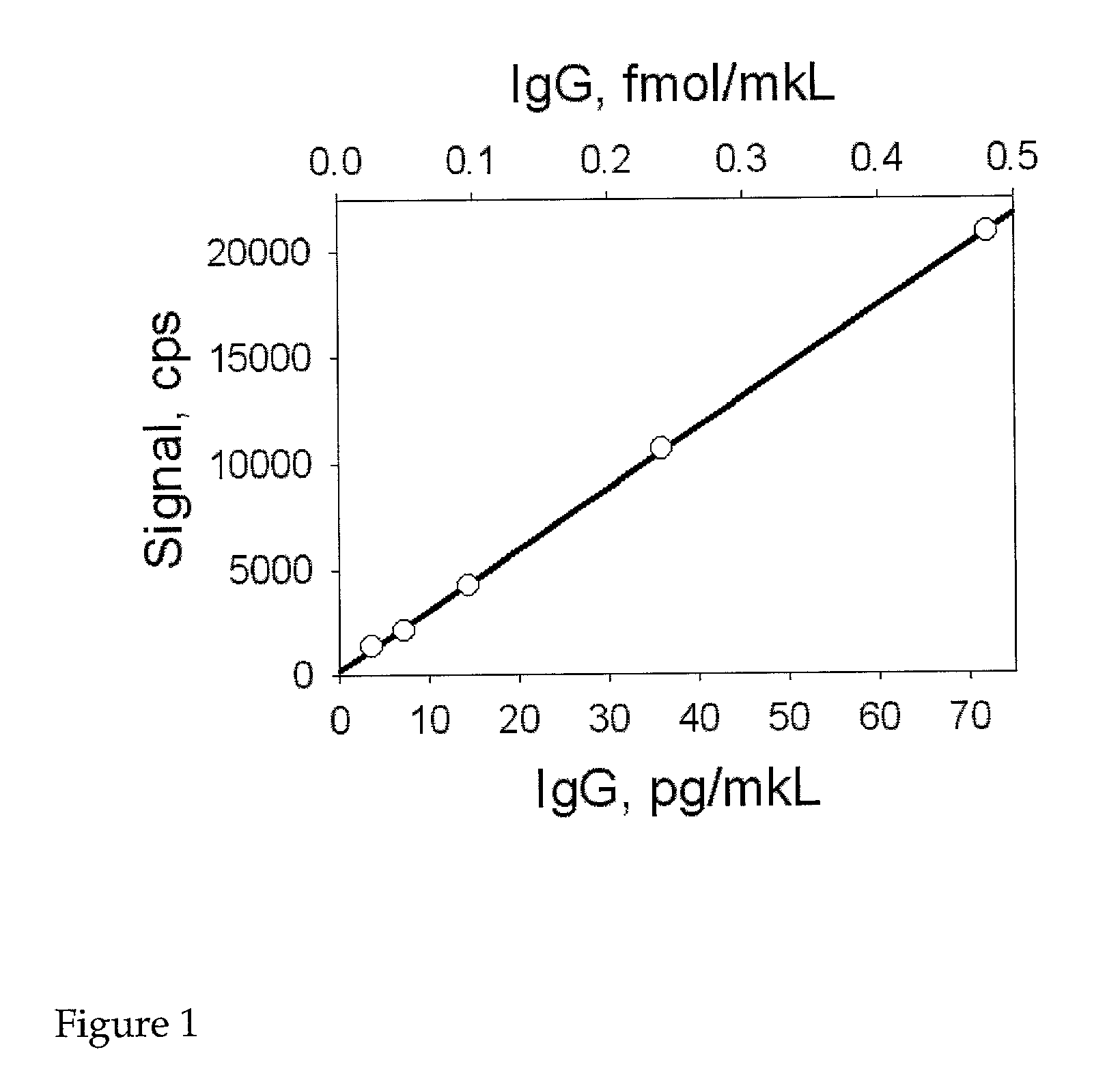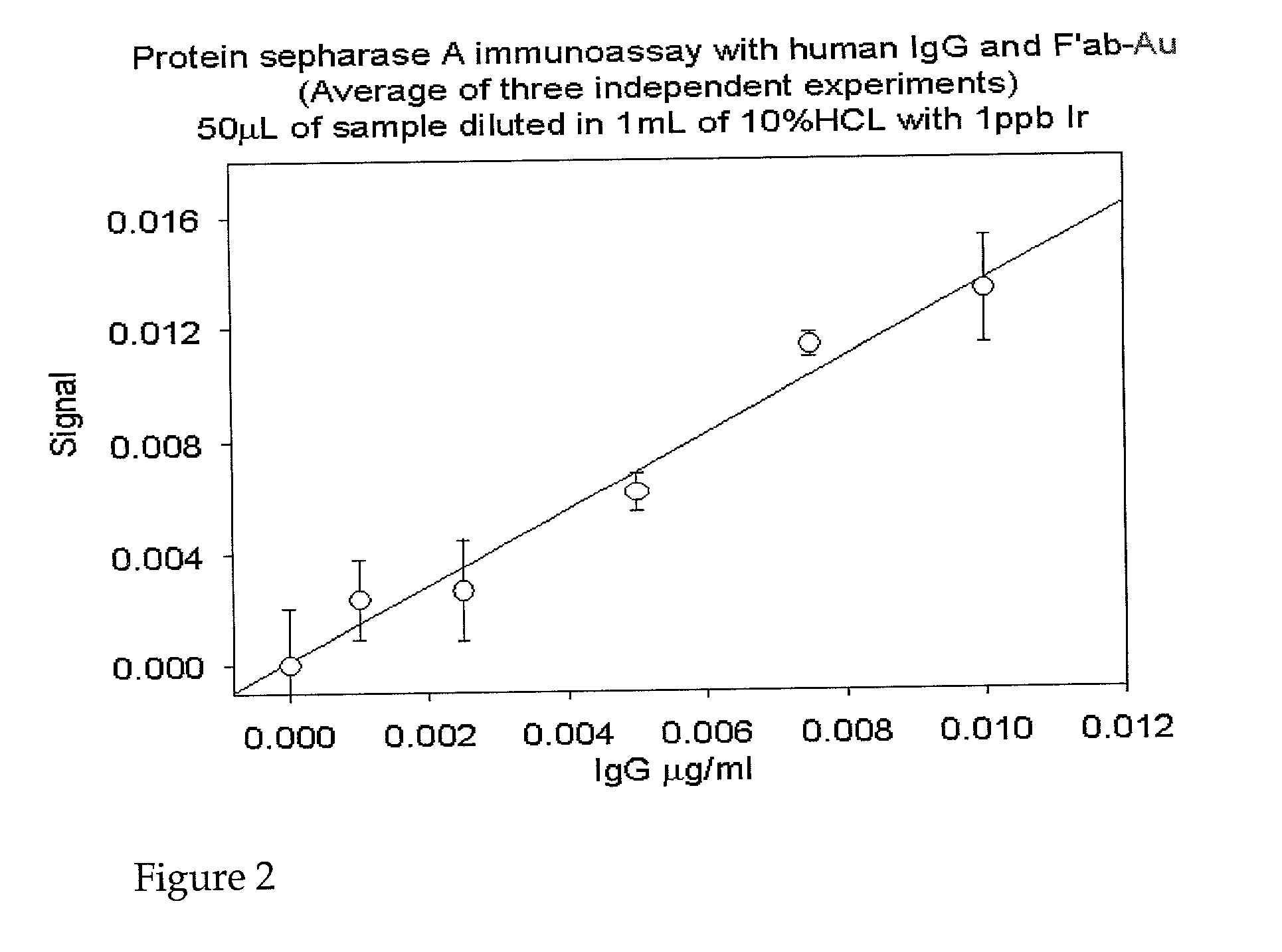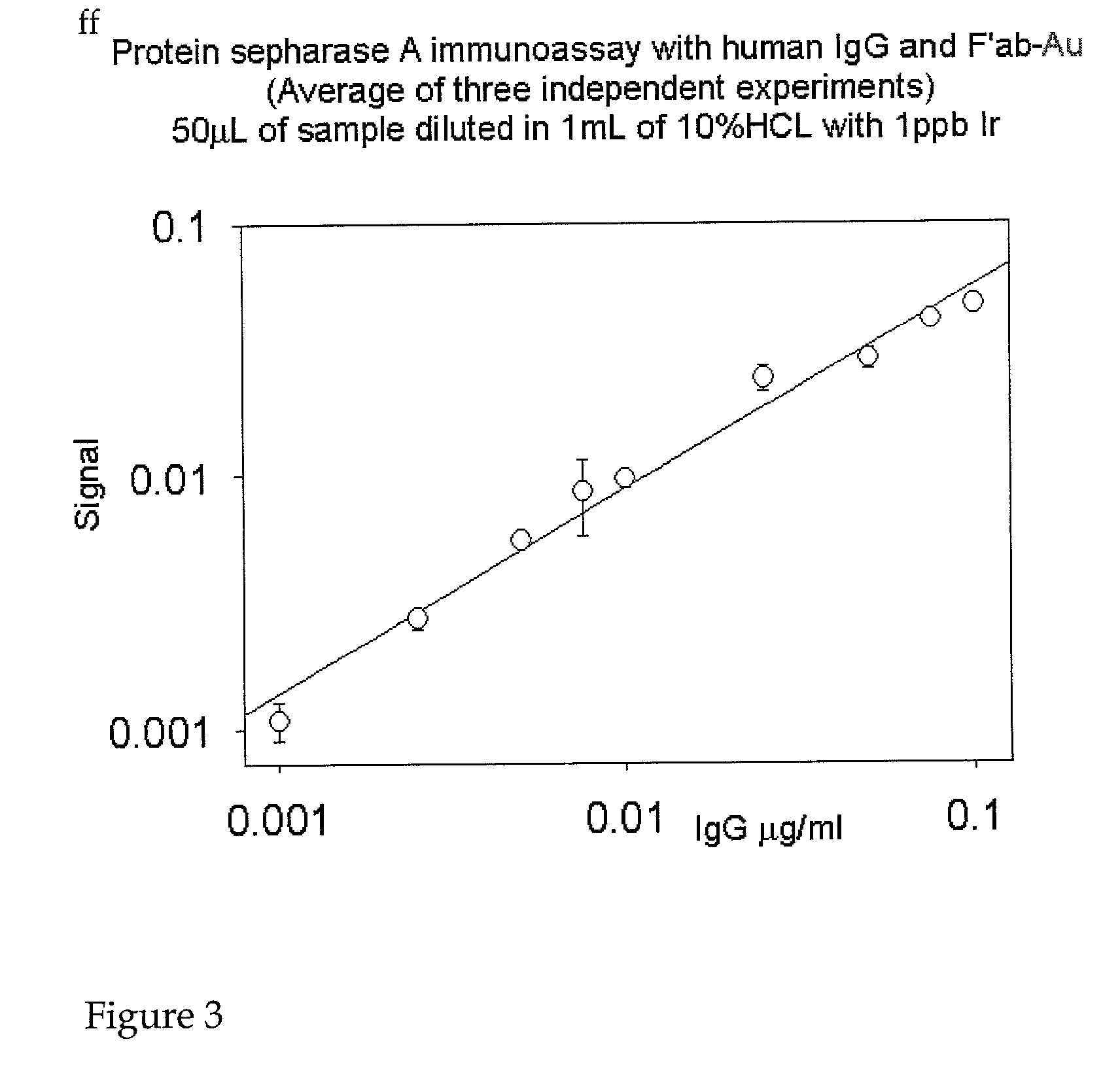Elemental analysis of tagged biologically active materials
a biologically active material and elemental analysis technology, applied in the field of elemental analysis of tagged biologically active materials, can solve the problems of cumbersome preliminary set of steps, inability to use wang's method for immunoassay detection, and inability to achieve elemental tagging of biologically active materials
- Summary
- Abstract
- Description
- Claims
- Application Information
AI Technical Summary
Benefits of technology
Problems solved by technology
Method used
Image
Examples
example 1
Nanogold™ Immunoassay
[0104]The following provides an example of the methods of the invention using the NANOGOLD-IgG™ (or NANOGOLD-FAB′™; Nanoprobes) immunoassay and its protocol. PBS buffer A is prepared as follows: 150 mM NaCl; 20 mM phosphate, pH 7.4; 1% BSA (bovine serum albumin). All eppendorf tubes, micro-titer plates, and filters to be used subsequently are pacified with PBS buffer A for 1 hour at room temperature. This treatment will reduce the non-specific interactions that occur between the plastic used and the antigen and NANOGOLD-IgG™. Alternatively low retention plastic products can be used (e.g. Axygen tubes). Following this a solution of the antigen (peptide, protein, etc.) in the concentration range of 1000 to 0.5pg / μl in PBS buffer A is prepared. All dilutions are stored on ice. Subsequently, 100 μl of either antigen solution or PBS buffer A (for controls) is pipetted into the individual wells of the micro-titer plate (or set of eppendorf tubes). The NANOGOLD-lgG™ is...
example 2
Immunoassay, other than NANOGOLD-IgG™
[0105]According to this example, an antibody is tagged with an element (eg. Eu, Ru, etc.) suitable for analysis by ICP-MS and is introduced into a sample containing antigens of interest (e.g. human blood proteins). The element-tagged antibody reacts specifically to the target antigen. The resulting tagged antigen-antibody complex is separated from un-reacted antibody (as in Example 1, 3, 4, 5, 8, 9, or 10), and the tagged complex is analyzed by ICP-MS. Variations of this example include:[0106]a) Tagging with multiple atoms to amplify the signal and thereby improving detectability.[0107]b) As, a), except the tag contains several isotopes of the same element or different elements, preferably in a non-natural (unusual) distribution, so that the unique isotope distribution is a determinant of the targeted antigen. It is to be recognized that there are more than 80 naturally occurring elements (of which some 60 may have value in this application) havi...
example 3
Protein A SEPHAROSE Immunoassay
[0109]The following provides an example of the methods of the invention using the Protein A SEPHAROSE CL-4B™ (Pharmacia) immunoassay and its protocol. Either NANOGOLD-FAB′™ or another element-labeled Fab′ specific to the target protein (or host species of the secondary antibody) may be used. There are two types of immunoassays that may be used, involving analyte complexes:[0110]a) Direct immunoassay, which would involve trapping the target protein of interest (protein X) by incubating Protein A SEPHAROSE CL-4B™ with an excess of antibody specific to the target protein, washing off the un-reacted antibody, adding the protein sample, washing off the unbound protein, and then exposing the PAS-antibody-protein X complexes to element-labeled, anti-X Fab′.[0111]b) Indirect immunoassay, which would involve trapping the target protein of interest (protein X) by incubating Protein A SEPHAROSE CL-4B™ with an excess of primary antibody (e.g. polyclonal) specific ...
PUM
| Property | Measurement | Unit |
|---|---|---|
| atomic number | aaaaa | aaaaa |
| atomic number | aaaaa | aaaaa |
| atomic number | aaaaa | aaaaa |
Abstract
Description
Claims
Application Information
 Login to View More
Login to View More - R&D
- Intellectual Property
- Life Sciences
- Materials
- Tech Scout
- Unparalleled Data Quality
- Higher Quality Content
- 60% Fewer Hallucinations
Browse by: Latest US Patents, China's latest patents, Technical Efficacy Thesaurus, Application Domain, Technology Topic, Popular Technical Reports.
© 2025 PatSnap. All rights reserved.Legal|Privacy policy|Modern Slavery Act Transparency Statement|Sitemap|About US| Contact US: help@patsnap.com



